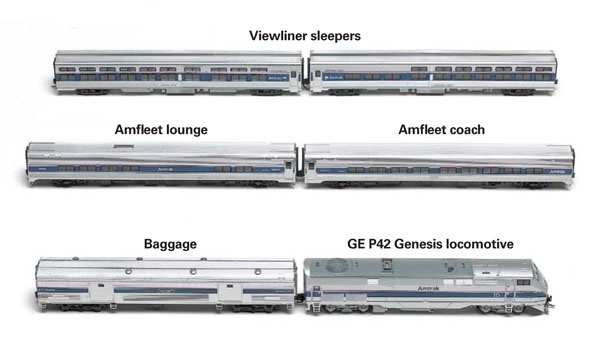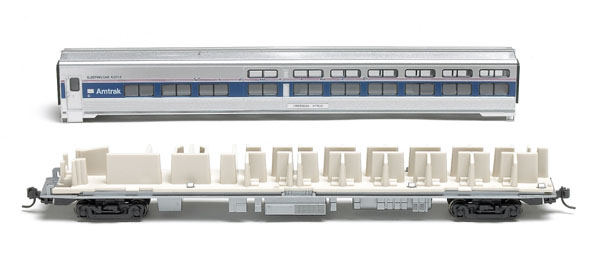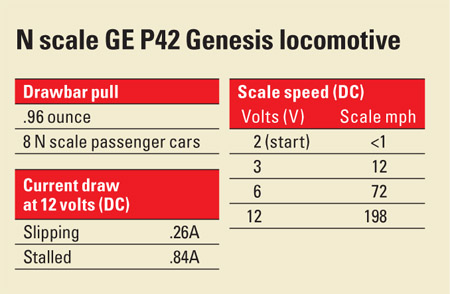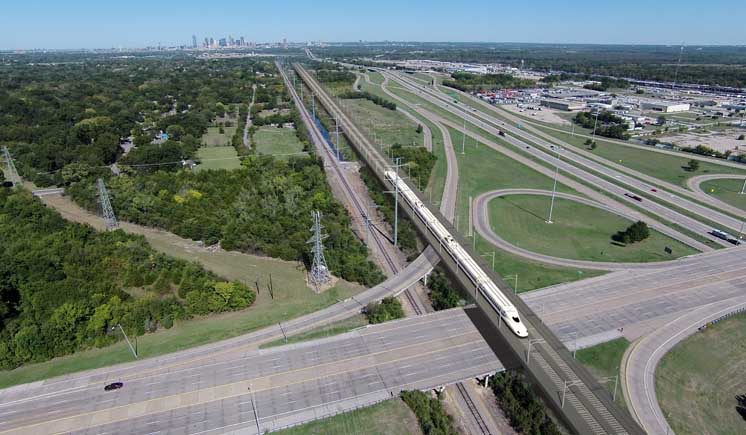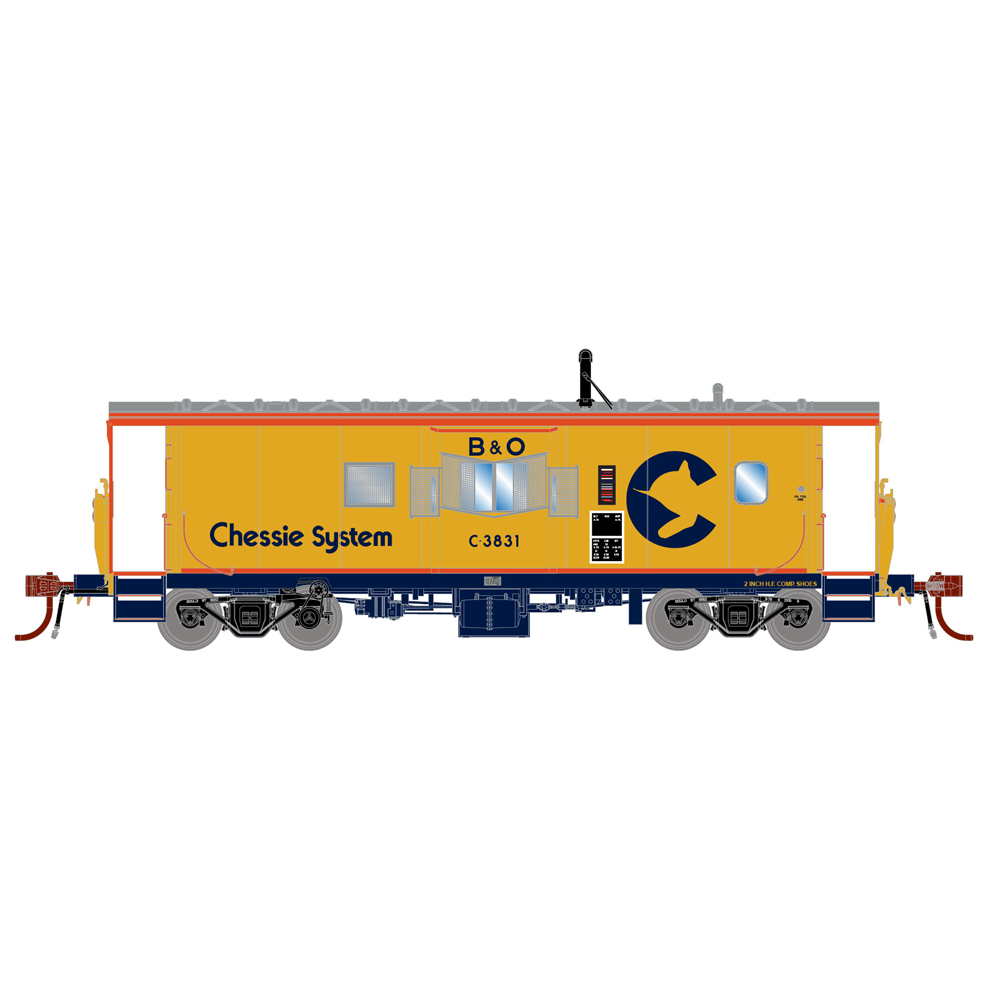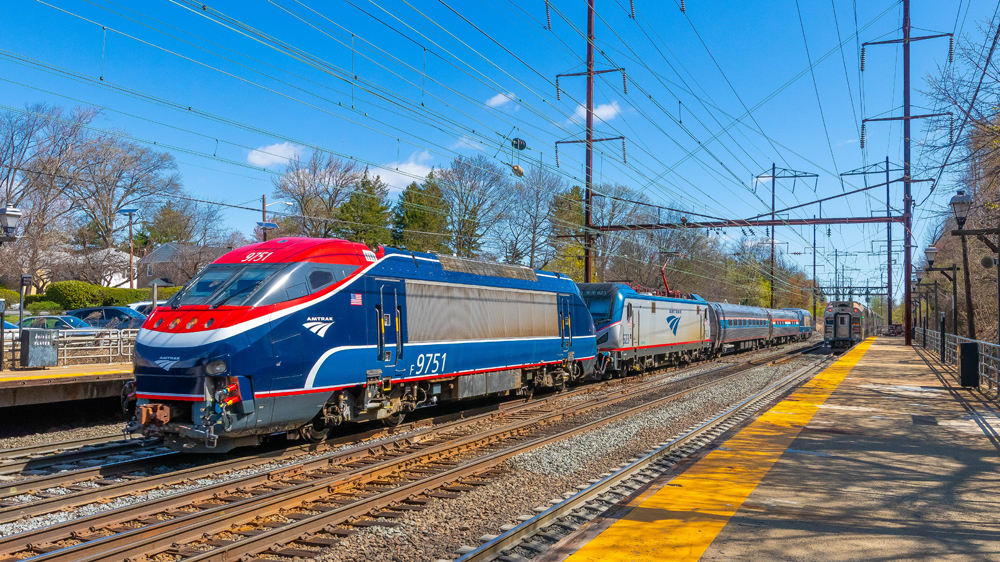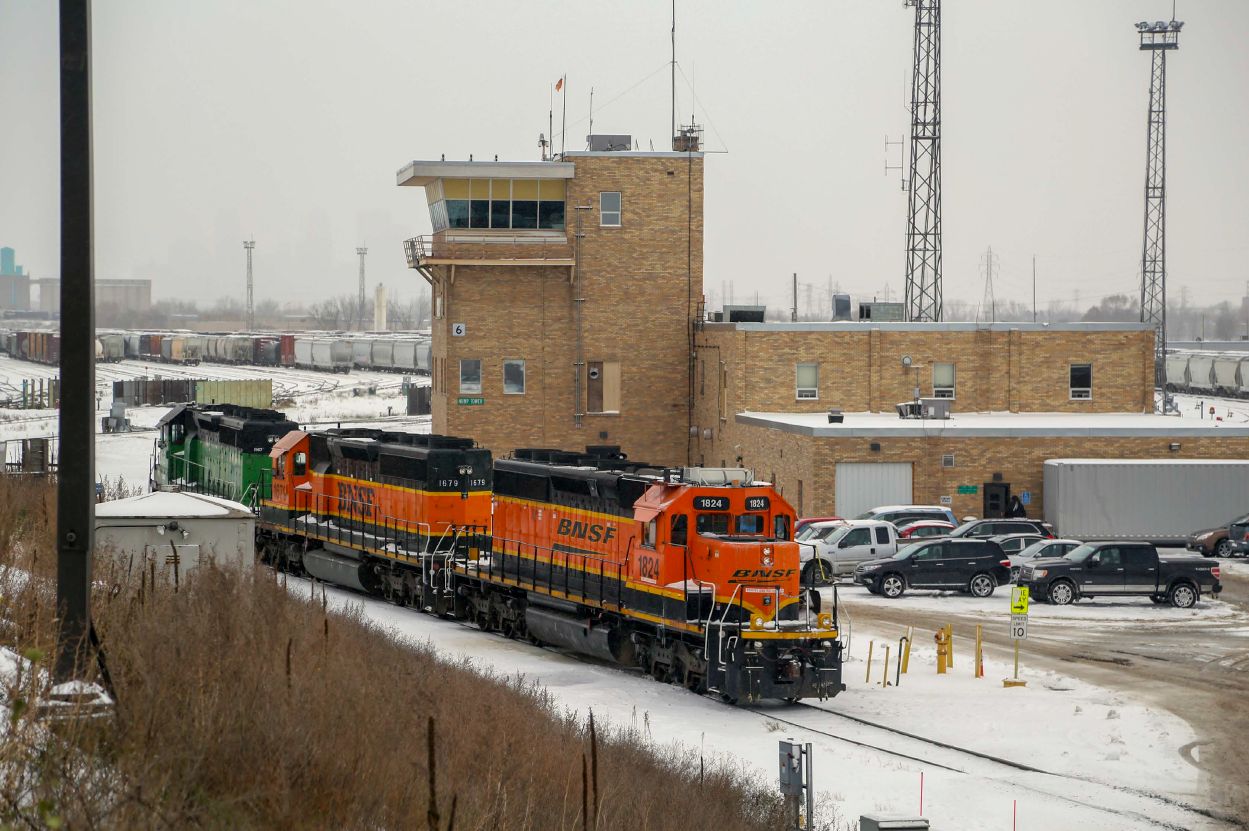The phases of Amtrak. The National Railroad Passenger Corp., operating under the name Amtrak, took over most of the United States’ intercity passenger business on May 1, 1971. Railroads had been losing money on passenger service for years, as first highways and then airlines provided low-cost competition. Seeing a need to continue the service, the federal government launched Amtrak. Railroads were offered the choice of maintaining their own passenger service or signing on with Amtrak. Most railroads, which had been scaling back and abandoning passenger routes for years, signed up.
The new railroad, which owned no track of its own, ran its schedule using locomotives and cars leased or bought second-hand. This multicolored patchwork of equipment became known as the “Rainbow Fleet.” By 1975, though, Amtrak had repainted all its equipment in its official paint scheme. As time went on and Amtrak started purchasing new cars and locomotives, it introduced new paint schemes. Railfans refer to these schemes by numbered “phases.”
Kato’s N scale set is decorated in the phase IV scheme, introduced on Viewliner sleeper cars in 1993 and on locomotives a year later. This scheme is characterized by a brushed or bright aluminum body with two thin red stripes topping a wide dark blue stripe on a white background. This paint scheme was replaced by the phase V scheme with the delivery of Amtrak’s second order of General Electric P42 Genesis locomotives in 2001. Most Amtrak equipment today wears phase IVb or phase V livery.
The fact that these locomotives and cars are still around for photography and measurement allowed Kato to produce very accurate models. The locomotive, Amtrak no. 16, is well-documented in railfan photos, and those shot while it was wearing its phase IV paint scheme closely match the look of Kato’s model. The model’s dimensions and details, such as grill louvers, rooftop warning labels, and trucks, match drawings of the Genesis locomotive printed in the January 1994 Model Railroader.
The cars included in the set strongly resemble prototype photos of the same class found online. Model Railroader printed diagrams of the Viewliner cars in January 1997, and the Kato cars match. Likewise, the Amfleet cars match dimensions and photos printed in the 1997 Car & Locomotive Cyclopedia
(Simmons-Boardman).
The plastic shells on the cars are well made, with straight and regular fluting, finely molded grillwork, and grab irons molded in place. They’re painted in a smooth, shiny, simulated plated-metal finish. The stripes and lettering are crisp, straight, opaque, and without voids.
The cars have blackened metal wheelsets on plastic axles, all of which were in gauge on our sample. Bronze wipers pick up electricity from every wheel for interior lighting. Kato offers the Digital Command Control-equipped set with lighted cars, or lighting kits (sold separately) can be installed by the modeler.
The couplers on the cars, as well as on the locomotive, were all mounted at the correct height. Following typical Kato practice, the magnetic metal trip pins were supplied separately to be added by the modeler. I found these relatively easy to install using tweezers. However, the set included only four trip pins – nowhere near enough for all 12 couplers in the consist. This doesn’t seem to be a mistake, since the diagram included in the package shows only four pins.
The set also included several details to be installed on the locomotive by the user, including m.u. hoses, a front headlight lens, and the front illuminated number board. These parts are quite tiny, and I almost lost several of them when cutting them from the sprue or when they popped out of the tweezers
I was using to install them. I found this to be an inconvenience.
The cars all weighed in at about 1.5 ounces, which put them right about where they should be, according to National Model Railroad Association recommended practice 20.1.
Kato offers the locomotive with a DCC decoder, but our sample wasn’t so equipped. I put the engine through its paces on our test track using a Model Rectifier Corp. Tech 4 power pack.
The locomotive responded to the throttle at only 2 volts, creeping along at a speed too slow for our speedometer to measure. Higher voltages revealed the model to be a real speedster, reaching nearly 200 scale mph at 12V. This is almost double the prototype’s rated top speed of 110 mph.
Though there was noticeable motor noise at top voltage, it was much more subdued at lower speeds. Most modelers probably wouldn’t want to run the locomotive at such a non-prototypical high speed, anyway.
The force meter on our test bench rated the locomotive’s drawbar pull at almost 1 ounce, enough to pull about 8 N scale passenger cars on straight and level track. When I tested this by adding the five-car consist to the locomotive and running it at 12V, its top speed was not diminished.
The locomotive and cars were able to transit the tight curves on our N scale Salt Lake Route project layout, thanks in part to the cars’ truck-mounted couplers. However, they would look more realistic operating on broader curves.
All aboard Amtrak. Kato makes some of the best-looking and most-reliable N scale locomotives and cars available today. This set lives up to that standard. If you’re modeling modern intercity passenger traffic in N scale, this set is for you.
Manufacturer
Kato USA Inc.
100 Remington Rd.
Schaumburg, IL 60173
katousa.com
Era: 1994 to 2001 (as decorated)
Locomotive features
- Body-mounted magnetic knuckle couplers (with modeler-installed trip pins)
- Directional light-emitting-diode head, tail, and marker lights
- Five-pole skew-wound motor with dual brass flywheels
- Modeler-applied details
- Molded plastic cab interior
- One-piece die-cast metal frame
- Phase IV paint scheme
Car features
- All-wheel electrical pickup for interior lighting (available)
- Molded plastic interiors
- Phase IV paint scheme
- Truck-mounted magnetic knuckle couplers (with modeler-installed trip pins)






